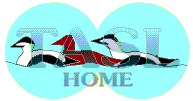9 December 1997
Dear Soheil;
We received your ISS report at Manomet. Thank you.
The past year our network continued to expand; I am especially pleased with the growing number of cooperators that are sending us counts from wildlife refuges and wildlife management areas—these will become benchmark data in our future efforts to track shorebird population changes.
As most cooperators know, we have been working closely with the Western Hemisphere Shorebird Reserve Network (WHSRN)to provide information needed for conservation and management planning. This includes our participation in workshops focused on needs and opportunities for managing for shore and other nongame birds in the National Wildlife Refuges (NWR) of the US, private lands, and other government programs. During 1997 we produced workshops in Florida, Delaware and Ohio; over the last 5 years we have worked in training programs with more than 750 wildlife and conservation professionals.
ISS data are proving invaluable for showing when and where opportunities exist for effective shorebird management, and for helping to prioritize shorebird management possibilities. To further this end, we are using ISS data to develop booklets for U.S. Forest Service wildlife managers and others; these will show what guilds of shorebirds are most common in different parts of the U.S., and when they are most common. This will provide wildlife managers with information useful for scheduling management activities for shorebirds.
ISS data also were particularly useful in a compiling a list of sites in the United States that qualify for inclusion in the Western Hemisphere Shorebird Reserve Network. Our report was well-received at a WHSRN planning conference in Ottawa, Canada, which was attended by members from 8 Western Hemisphere nations, representing all 31 WHSRN sites located from Argentina to Alaska! The report provides a planning baseline for future efforts in the US, and has been circulated to key governmental agencies and private conservation organizations.
We have been working with managers too. ISS data have been evaluated and supplied to regional planning groups who are aiming to develop regional ecosystem management plans and objectives. Most recently we have been working with teams in lower Mississippi River Valley states, Prairie Pothole region states, and southeastern Atlantic coastal states.
I am also very excited to report that our long-standing hope of producing a shorebird migration atlas is finally under way. Laura Payne and I are hard at work evaluating the 40,000 censuses which comprise the ISS, and plan to have a draft version of the atlas completed within the next year. We will provide an update of progress in our March newsletter.
Strategic shorebird sites in Canada, Mexico, Surinam, Brazil, Venezuela, Argentina, Peru, and the US have now been included in the Western Hemisphere Shorebird Reserve Network. Some of the most recent sites added to WHSRN are Chaplin Lake in Alberta (Canada), Salt Plains NWR (Oklahoma), Kachemak Bay (Alaska), and Gray's Harbor NWR (Washington).
Growth of the WHSRN network would not have happened without ISS volunteers' help. The data we have collected have been instrumental in documenting the importance of many of the current and hopefully future WHSRN sites. I am excited about the ISS project, and the uses being made of it. With your help, and that of others like you, we're making steady progress towards understanding and conserving shorebirds. Needless to say, this would not be possible without the incredible voluntary support we have had. My heartfelt thanks!
Sincerely yours,
Brian Harrington
PS TASL may have some of our highest Purple Sandpiper counts.
last updated: 12/13/1997
url: http://www.gis.net/~szendeh/tisswi97.htm
